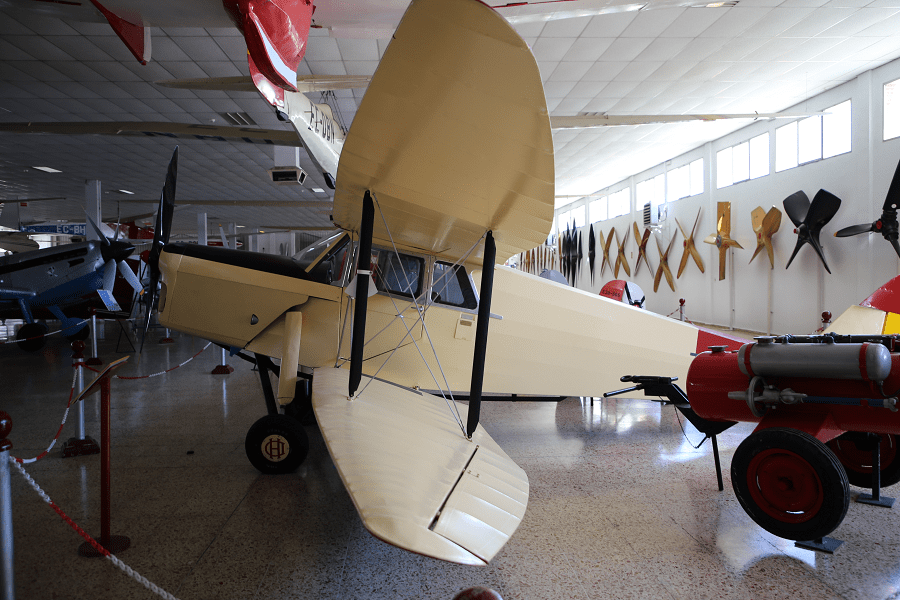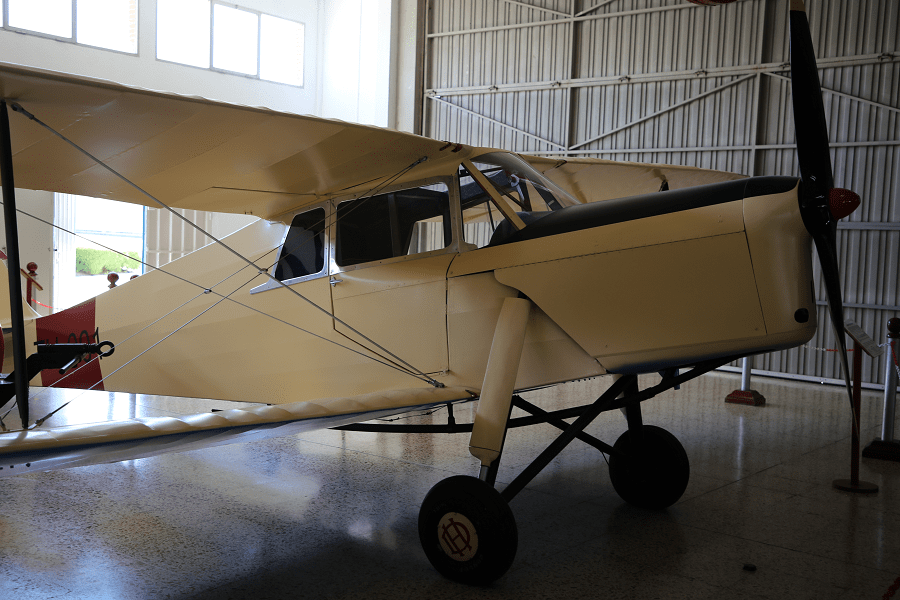The de Havilland DH.87 Hornet Moth is a single-engined cabin biplane designed by the de Havilland Aircraft Company in 1934 as a potential replacement for its highly successful de Havilland Tiger Moth trainer. Although its side-by-side two-seat cabin made it closer in configuration to the modern aircraft that military trainee pilots would later fly, there was no interest from the RAF and the aircraft was put into production for private buyers.
General characteristics
- Crew: 1
- Capacity: 1 passenger / trainee
- Length: 24 ft 11.5 in (7.607 m)
- Wingspan: 31 ft 11 in (9.73 m)
- Height: 6 ft 7 in (2.01 m)
- Wing area: 244.5 sq ft (22.71 m2)
- Empty weight: 1,241 lb (563 kg)
- Gross weight: 1,950 lb (885 kg)
- Fuel capacity: 35 imp gal (42 US gal; 159 l) fuel in fuselage tank; 2 imp gal (2 US gal; 9 l) oil in an air-cooled tank
- Powerplant: 1 × de Havilland Gipsy Major I 4-cylinder air-cooled inverted in-line piston engine, 130 hp (97 kW)
- Propellers: 2-bladed fixed-pitch propeller
Performance
- Maximum speed: 124 mph (200 km/h, 108 kn) at sea level
- Cruise speed: 105 mph (169 km/h, 91 kn) at 1,000 ft (305 m)
- Stall speed: 40 mph (64 km/h, 35 kn)
- Range: 620 mi (1,000 km, 540 nmi)
- Service ceiling: 14,800 ft (4,500 m)
- Rate of climb: 690 ft/min (3.5 m/s)
- Time to altitude: 5,000 ft (1,524 m) in 8 minutes 45 seconds
- Wing loading: 7.97 lb/sq ft (38.9 kg/m2)
- Power/mass: 0.067 hp/lb (0.110 kW/kg)
The de Havilland Aircraft Company Limited was a British aviation manufacturer established in late 1920 by Geoffrey de Havilland at Stag Lane Aerodrome Edgware on the outskirts of north London. Operations were later moved to Hatfield in Hertfordshire.
Known for its innovation, de Havilland was responsible for a number of important aircraft, including the Moth biplane which revolutionised aviation in the 1920s; the 1930s Fox Moth, a commercial light passenger aircraft; the wooden World War II Mosquito multirole aircraft; and the pioneering passenger jet airliner Comet.
The de Havilland company became a member of the Hawker Siddeley group in 1960, but lost its separate identity in 1963. Later, Hawker Siddeley merged into what is eventually known today as BAE Systems, the British aerospace and defence business. The de Havilland name lives on in de Havilland Canada, which owns the rights to the name and the aircraft produced by de Havilland’s former Canadian subsidiary, including the Dash 8 regional airliner previously produced by Bombardier Aerospace.












